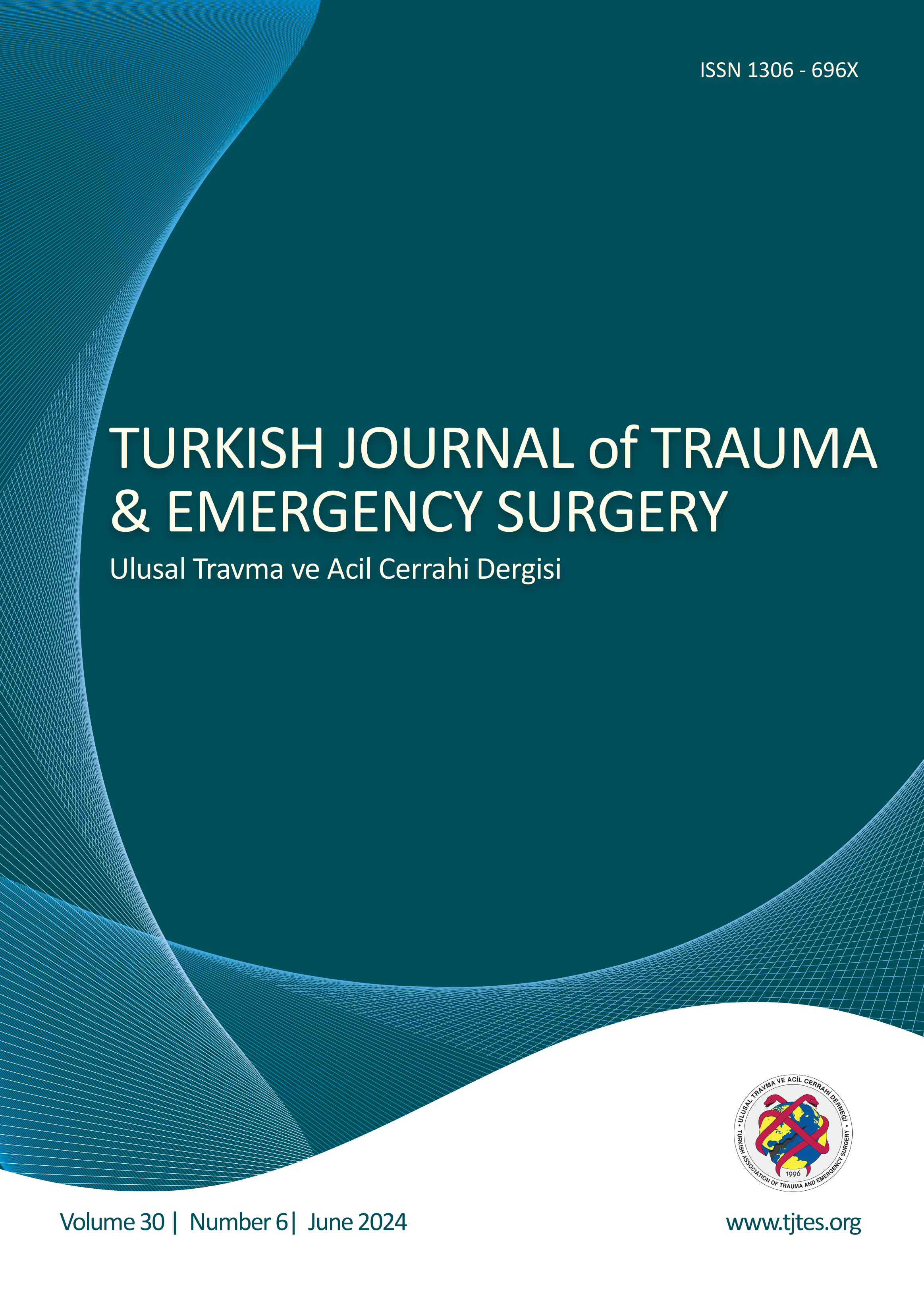Hızlı Arama
El ve El Bileğinin Yabancı Cisim Penetrasyon Yaralanmaları; Retrospektif Çalışma
Emre Hocaoğlu1, Samet Vasfi Kuvat1, Burhan Özalp2, Anvar Akhmedov1, Yunus Doğan1, Erol Kozanoğlu1, Fethi Sarper Mete1, Metin Erer11İstanbul Üniversitesi, İstanbul Tıp Fakültesi, Plastik Rekonstrüktif Ve Estetik Cerrahi Anabilim Dalı, İstanbul2Dicle Üniversitesi Tıp Fakültesi, Plastik Rekonstrüktif Ve Estetik Cerrahi Anabilim Dalı, Diyarbakır
Amaç: Konuyla ilgili ileri seviyedeki pratik bilgi birikimimize rağmen, el ve elbileğinin yabancı cisim penetrasyon yaralanmaları, halen eksik tedaviler ve komplikasyonlarla gündeme gelebilmektedir. Konunun sosyal, etiolojik ve hukuki boyutu günlük yoğun pratik içinde atlanabilmektedir. Bu çalışmada, konunun sosyal, klinik ve terapötik özelliklerini ele almak amaçlanmıştır.
Yöntem: Bir el cerrahisi kliniğince tedavisi yapılmış 86 hastanın retrospektif analizi yapılmıştır.
Bulgular: Ortalama yaşı 32 olan popülasyonun %25,6sı endüstriyel işçilerden ( en kalabalık mesleki grup) oluşmaktaydı. Başvuruların %26,7si elektif idi. Yaralanma döneminde ek hastalığı olanlar popülasyonun %15,1ini, psikiyatrik tanısı olanlar %5,8ini oluşturuyordu. İşaret parmağı en sık yaralanan bölge (%33,7) idi. Operasyonların %94,2si lokal anestezi altında yapılmıştı. %30 hastada nöral, tendinöz ve/veya kemiksel hasar mevcuttu. Hastaların %30u postoperatif el fizyoterapi programına dahil edilmişlerdi.
Sonuç: El ve elbileğinin yabancı cisim penetrasyon yaralanmaları genel yönleri ve pratikte gözden kaçabilen özellikleri ile ele alınmıştır.
Foreign Body Penetrations of Hand and Wrist; a Retrospective Study
Emre Hocaoğlu1, Samet Vasfi Kuvat1, Burhan Özalp2, Anvar Akhmedov1, Yunus Doğan1, Erol Kozanoğlu1, Fethi Sarper Mete1, Metin Erer11Department Of Plastic Reconstructive And Aesthetic Surgery, Istanbul University, Istanbul Faculty Of Medicine, Istanbul, Turkey2Department Of Plastic Reconstructive And Aesthetic Surgery, Dicle University, Diyarbakır, Turkey
Background: Despite significant practical knowledge and experience on foreign body penetration injuries of the hand and/or wrist; deficient managements and complications can still be encountered and ignorance of its causative and eventual social aspects unfortunately is a substantial fact. This study aims to cover the clinical and social properties and the management of this kind of injuries.
Methods: A retrospective analysis of 86 patients that needed evaluation and treatment in a Hand Surgery Division of a university hospital is made.
Results: The median age was 32 (min: 4, max: 63). Industrial workers constituted the most crowded occupational group (n: 22, 25.6%). Twenty-three (26.7%) of the cases were elective admissions. Thirteen (15.1%) patients had various comorbidities and five (5.8%) had psychiatric diagnoses at the time of the injury. Index finger was the most frequent site of injury (n: 29, %33.7). General anesthesia was not necessary for the management of 94.2% of the cases. In 26 (30%) of the patients neural, tendinous or osseous damage was observed. Twenty-four (30%) patients were included in a postoperative hand physiotherapy program. Conclusion: The practically well known general features of the issue and its aspects that could still be overlooked currently are reevaluated in the light of our observational data.
Makale Dili: İngilizce





